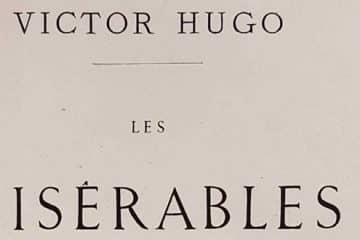Article menu:
- Text of the poem
- History of creation
- The theme of the work
- Composition
- The main character
- The main idea of the poem
- Love and creativity.
- Genre
- Means of expression
- Critics’ reviews
Text of the poem
So I came to you with greetings,
To tell you that the sun has risen,
That it’s a hot light
It was trembling on the sheets;
To tell you that the forest woke up,
The whole one woke up, every branch,
Every bird trembled.
And the spring is full of thirst;
To tell you that with the same passion,
Like yesterday, I came again,
That the soul is still as happy
And I’m ready to serve you;
To tell what’s everywhere
I’m having fun,
What I don’t know myself, what I will do
Singing – but only the song is ripening.
History of creation
Afanasy Afanasyevich Fet studied in Moscow first at the Faculty of Law, then at the Faculty of History and Philology, from which he graduated in 1844. The poem “I came to you with greetings” was written by the poet in 1843, and in the same year it was published in the magazine “Domestic Notes”.
The surname Athanasius at birth was Shenzhen, but later, because Orthodoxy did not accept the blessing and wedding made in the Lutheran church, he was deprived of his surname and a noble title. Later, the poet again deserved the title of nobility and everything was returned to him. The surname Fet was his mother’s last name and after Afanasy Afanasyevich regained his father’s status and surname, he left the surname Fet for creativity.
Afanasy Afanasyevich combined amazing sensitivity and romantic soul, efficiency, and economy of the landlord. Apple pastille from his estate was delivered to the royal court. Along with practical cases, the poet has published more than one collection of poems during his long and fruitful life.
All seasons: spring, summer, autumn, winter – were reflected in Fetov’s poetry. We invite readers to familiarise themselves with the description of one of his works
His work for the benefit of the state, literature, and his home was later writing the work. The poem was written during the years of study when youth pushed the poet to fall in love and dreaminess.
No one knows exactly to whom this work is dedicated, but it is assumed that Fet dedicated it to Maria Lazic, with whom he was then in love. The girl was the ideal of morality for the poet, and later he survived her death hard.
The twenty-three-year-old poet was obviously in love and happy. He sings openly about the joy of love, admires everything that surrounds him, and does not hide his feelings. Without naming his beloved, the poet still reveals his soul to her and his readers, which can appreciate all the beautiful things in this world. It is not surprising that the poem was published in the magazine “Domestic Notes” immediately, in the year of its writing.
The theme of the work
The poem “I came to you with greetings” is an enthusiastic appeal to the beloved lyrical hero. The hero is in love and happy, he sees the beauty in everything around him and enjoys the sunrise and the awakening forest. The lyrical hero is ready to sing, although he does not yet know what he will perform. The song ripens in his loving soul, he is ready to live, revealing it to the whole world. The hero’s love and his song are pure, the poet does not hide or be ashamed of his love, his delight.
The main theme of the work is delight, love, and joy, which overwhelms the spring morning of the lyrical hero. He hurries to his beloved to share his experiences, to please her in the morning. Love intoxicates and fills the whole world of the lyrical hero. He is eager to share everything he feels with his beloved.
The poet surprisingly harmoniously combines the description of nature with the expression of his feelings. Using simple words and images, he makes you breathe everything he describes. He fills with life, delight, and love with everything he sees and hears around him. Such an ability is born of the poet’s real talent, the romance of his soul, and the subtlety and refinement of his mind. The work shows both the talent and the author’s work.
Composition
The poem is two-part. In the first pair of stanzas, the author describes nature, he dedicates two subsequent stanzas to the theme of love.
The love-filled heart of the hero sees its manifestation everywhere. The author clearly says that spring and early morning are around. Nature awakens, and the forest and everything around is filled with life.
Falling in love and knowing about the divided sense of the lyrical hero allows him to see joy and happiness through all the events and objects surrounding him. This is only possible when the lover is sure that he is expected at the meeting where he is in a hurry. He is waiting for the next meeting as a great miracle.

The hero is eager to live and sing. He sees happiness in every awakening branch of the forest, in the rising sun, and in the singing of birds. The thirst for love and life is seen in everything. The hero is ready to give the strength of his soul to the whole world, he is generous with love and joy, ready to serve his beloved and happiness. Pure love always gives away without expecting anything in return. The selfish can’t love. One of the important properties of true love is the thirst to give. Pure true love is full of itself. It does not absorb but pours out on everything around. For a long life together, it is necessary that the “second half” also give, then this love will become eternal. But the first impulse of true love is pure altruism.
This work is a song of true love, generosity, unselfishness, joy, and beauty.
The main character
The main character of the work remains behind the scenes, but constantly “sounds”. The whole verse is his monologue, an appeal to his beloved. At the beginning of the poem, the hero talks about sunrise, the awakening of the forest, and spring. He enthusiastically describes nature, paying attention to the smallest details to emphasize spring, thirst for life, and convey beauty. Fet is characterized by the theme of unity of man with nature, he subtly feels it and perfectly masters the word, knowing how to convey his feelings in verses.
The lyrical hero gives his story to his favorite, so the description of nature is filled with the most delicate colors and images.

Further in the work, the hero explains what caused all the feelings he conveyed when describing nature. The hero is in love and is in a hurry to meet his beloved. He saw her yesterday, but he doesn’t think they meet too often. His passion has not diminished since yesterday, it is still great.
The hero’s soul is filled to the brim with fun from the joy of divided love, from anticipation of meeting his beloved. He is ready to serve, happy to share everything he has from excess. The hero does not know what kind of song is maturing in his soul but feels that it will soon appear to the world. Love inspires the author, and he is sure that the delight of love will result in a work of art, a song.
The main idea of the poem
The main idea of the verse is how love transforms everything on earth. Love fills people’s lives with light and joy. Through the eyes of love, the whole world is seen differently, it blooms and sparkles with new colors. Love is inseparable from life, it fills everything around.
It’s not just the love of a man and a woman. Work done with love becomes creative, plans filled with love become dreams, and well done with love does not know fatigue. In this work, the author talks about love between a man and a woman. Love paints sunrise with sparkling life, spring becomes special, and the forest becomes alive. Love in verse transforms the whole world for a hero hurrying on a date early in the morning. He breathes full breasts and sees life in every waking branch and the trill of every bird.

Athanasius Fet inextricably linked nature and man; the dream and its embodiment; the land and the souls of the people living on it. The poem “I came to you with greetings” is one of the brightest examples of the poet’s ability to tell about his experiences through a description of the surrounding nature. His speech in the work is so lively that the reader can hear a really direct speech of the author addressed to his beloved.
Love and creativity.
It’s no secret to anyone that creative and sexual energy has one source. Often people of art – artists, prose writers, and poets quite consciously looked for an object for love to experience creative inspiration.
But the unnaturalness of such attempts often leads to the exhaustion of a creative person, to “early burnout”. A vivid example of this is Yesenin, who was constantly looking for a new “muse” and wrote mainly under the influence of alcohol or passion for a woman and “burned out”, was exhausted very early, passing away at the age of thirty. And even at the age of twenty-six, Yesenin complains of fatigue and emptiness.
Athanasius Fet is the exact opposite of such poets. His love doesn’t come early. He writes the poem “I came to you with greetings” at the age of twenty-three. With all the lightness and fulness of the poet’s passion, he is quite chaste, and does not “change for trifles”. His love is full and generous.
Fet managed to combine romantic nature, poetry, and practical acumen. He doesn’t break away from reality, he doesn’t fly “into the clouds”. He is a landowner, works with peasants, and monitors the quality of products from his estate. He lives a full, busy life, in reality, remaining a romantic and poet. Practical acumen does not contradict the poetic nature of Fet, because his romance and beauty are reality.
It was nature that inspired Fyodor Tyutchev to live and create. We invite readers to familiarise themselves with the description of his poem “There is in the autumn of the original”.
Fet did not strive to live a long life, but correctly and intelligently used his life and creative potential and lived a long life.
Fet knows the power of inspiration, but he has not one way to get it, but a lot. Only after losing himself, forgetting about himself in his creation, does a person find a renewed creativity.
Genre
The genre of this work is a lyrical poem written by a four-foot chorus.
This is one of the vivid examples of Fet’s love lyrics. The selected genre of the poem allows the author to easily and naturally express his feelings of love, delight, and joy of the described morning. The simplicity of expression blurs the boundary between the reader and the author’s world. The reader easily begins to speak the author’s language when their feelings coincide with the birth of a new day.
Using a four-foot chorus, the poet managed to convey the smoothness and ease of personal treatment of his beloved. This allowed the reader to forget about the complexity of expressing feelings through a poetic form. Its speech flows naturally and smoothly.
Means of expression
In his work, Fet showed an excellent command of the Russian language. As they say, “everything ingenious is simple.” Without using complex forms, he conveys the deepest and strongest experiences, easily draws any image he wants, and conveys his mood and aspirations.
In this verse, he does not use many expressive means. The personifications “the sun has risen”, “the sun trembled”, and “the forest woke up.” allow the sun and the forest to stand on a par with a person and act as if alive. He also uses epithets: “hot light”, and “spring thirst”. The verse uses metaphors: “the forest is full of spring thirst”, “the soul is ready to serve”, “the joy blows”, and “the song ripens”, which allow the reader to feel the fulness of the author’s experiences and seem to push him to implement the plan, to write a song. In the verse, the author uses a comparison: “with the same passion as yesterday”.
The means of expression that the poet has chosen perfectly harmonizes with the style of the whole work, setting the reader sublimely and lyrically. The poet managed to show the reader the charm of the world around him, make him admire him, and enjoy every ray of the sun.
The cross rhyme used by the author also enhances the effect of the reader’s presence at the described moment.

The verb “tell” is repeated four times, talking about the author’s desire to share his admiration for spring, dawn, the awakening of nature, and his passion. He can’t restrain himself and wants to tell by using this word in every verse.
Repetition of the sounds “a”, and “o”; alliteration of “p” and “p” set a clear rhythm of the verse, adding emotional contrast to the work.
The verse contains a lot of joy and light. And it’s important: to live in such a way as to notice the moments of joy that the Creator gives us at every step, in every day of our lives. The grateful soul sees these gifts and will be happy. Only an ungrateful heart lets them pass and thus loses the opportunity to be happy in life.
Fet seemed to take the reader out of the room in the morning and showed the charm of the born day and the rising sun as the embodiment of life.
The most important thing is to build a poem. It is the four-foot chorus that allows you to create a feeling of melody, smoothness, and singing of the verse.
Fet wrote a poem that is one sentence. The whole verse is one sentence. All four stanzas are read in one breath, easy, and with melody. In the verse, we see youth and a huge reserve of creative forces not only in content but also in the form of presentation.
Critics’ reviews
Despite the lightness and beauty of the poem, quite a few poets of that time accepted the poem hostilely. Perhaps this happened because most people adhered to the manner of writing the poem like Pushkin’s, and Fet used his unique manner of expression. And yet, later readers and critics praised this work.
“I came to you with greetings” is a real anthem of the lyrical poet. The poem was highly appreciated by contemporaries and remains very popular in our time.
Evaluation of modern readers
Athanasius Fet’s poem “I came to you with greetings” are immortal lines that are equally understandable to readers of any age.
Evaluation of modern readers
Images and symbols
The image of the lyrical hero is intertwined with the image of the forest, nature awakens “every branch” and reaches out to the sun, as well as the main character reaches for love with every cell. The symbol of love becomes morning, nature gives the hero strength and fills him with meaning. Morning comes daily, so the hero comes to his favorite every day and arrives constantly. What a nature’s mood, the same is that the lyrical hero has, what comes outside the window happens in the soul of the hero.
It will seem to the reader that the poet has strung impressions of the spring morning on each other, but in the work “I came to you with greetings” there is not a single random line. Each of them reflects the mental state of the lyrical hero.
Let’s analyze each saturated image separately:
- The image of the lyrical hero is filled with the favor of the spirit, as well as nature itself. Bright feelings of love encourage the hero to appear as a lover. The hero admires nature and his beloved, is overflowing with a joyful feelings and there is a desire to express these feelings in the song “I’m happy everywhere… I’ll sing, but only the song ripens”.
- The image of the forest – the poet compares the forest with man, the forest, as well as man awakens, after which the movement begins
- The image of the sun is represented by the vivid embodiment of life. The sun awakens trees with bright hot light.
- The image of the beloved hero – the poet is fascinated by his beloved, as well as admires the hero and nature.
- The image of spring – the poet is permeated with moments of spring joy.
- In the poet’s song – this song the hero reflects a sense of happiness. The hero is overflowing with love and wants to share the song with his beloved, as well as the forest.
Summary of the poem “I came to you with greetings”
Fet’s poem consists of a gentle palette of a spring morning, in which the poet falls in love with the chosen one. The work is written about a lyrical hero who came to his beloved with greetings. The hero will share his feelings about the world around him and bring good news about the spring day. The lyrical hero came to the chosen one to tell about the spring morning. Every second, the hero begins to admire a charming girl, the hero’s feelings are mixed with the beauty of nature, which awakens so slowly at dawn.
The hero’s soul is full of happiness like a spring forest. The poet comes to his beloved to tell the girl that “fun blows on him” everywhere. Overflowing with feelings of love, and admiring the awakening nature, the hero is ready to sing a song. In the soul of the poet, the song ripens, and love fills the man, just as the spring forest is crowded with birds singing.






The extremely conceptual and inspired poem, this analysis is completely consistent with my understanding of this work. Love is the power that can transform the world without transforming it because when you love the whole world is so beautiful, every leaf and every blade of grass is so fragile and tender. The spring festival lasts every day when you love it!